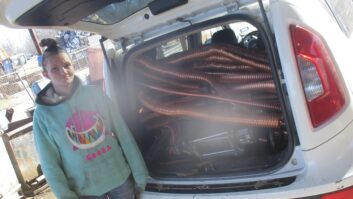
Fig. 1: Nail files? Nah … These are “fine sandpaper on a stick.”
credit: iStockphoto/TonyBonus On the National Association of Tower Erectors LinkedIn page, John McGarvey, a partner with the Insurance Office of America’s Telecom Division, wrote recently about the importance of collecting certificates of insurance from your subcontractors, a prudent risk management technique.
How do you know if the sub’s coverage is in force or really ever existed? It’s difficult in today’s world.
You may think a certificate protects you; but if you hire a contractor who has falsified their insurance certificate, you are the loser.
John reports a trend of insurance companies that have no idea they are insuring guys who are actually climbing towers. Should a loss occur, the insurer may deny the claim immediately based on misrepresentation.
IOA’s Telecom Division offers a no-obligation certificate of insurance audit. They will go through your certificates of insurance and verify policy numbers, find out if policies are in force and provide you with a synopsis of the findings. Contact him via email to [email protected] or call (770) 654-8666.
Whether or not you use John’s service, now is a good time to make a list of your subcontractors — tower riggers, HVAC, electricians. Any sub who works on your station should provide you with insurance certification. Managing this is yet another value-added service that you, the station or contract engineer, can bring to an employer or client.
Ihor Slabicki makes live recordings of small groups when they perform in concert. He edits and masters CDs from these recordings. In his spare time, he reads Workbench.
In our Feb. 12 column, I asked what’s in your toolbox. Ihor offers interesting and inexpensive suggestions.
First off are emery boards. Think of each as an applicator of “fine sandpaper on a stick” — very useful for filing down nicks or polishing corroded terminals and contacts. The length of the board lets you reach into equipment easily.
Next are drinking straws, useful for blowing out dust and dirt in crevices, even blowing out a dropped screw, nut or washer when you cannot reach into equipment to retrieve it. The length of the straw lets you aim the air blast, and you can control how much air and how strong of a blast (or puff) you send.
Ihor also likes “yellow stickies” — Post-it Notes brand, or similar products. These are useful for temporarily labeling everything but the dog. One can be rolled into a sleeve to wrap around a wire as an identifier, or cut to any size and used to temporarily label parts, switches, nearly anything. The slight tackiness allows you to hold screws or nuts in place while working with them, or to pick up parts that may have fallen.
The best thing about Ihor’s “tools” — their low cost. You can get straws at a fast food restaurant. A 100-count bag of 4-5/8-inch double-sided emery boards costs less than $10 on Amazon. And you can find Post-it Notes in your station’s office supply closet or various retail outlets.
Charles S. “Buc” Fitch, P.E., recently changed the blown incandescent bulb in a Marti SCG-10 SCA modulator to a warm white 20 ma, 5 mm LED.

Fig. 2: The Da Vinci 1.0 is a desktop 3D printer retailing for $499. The values that work are a 470 ohm 1/2 watt resistor in place of the nominal 15 ohm 1/4 watt that is on the meter PCB. Marti once again has a diode (1N4007) in the circuit to reduce the raw voltage. For that reason the LED is polarity sensitive. As you look at the PCB from the front (component side), the plus LED is the right solder pad that had been used for the bulb.
Changing out LEDs for the incandescent offers long life and reliable lighting. Thanks, Buc, for the tip.
Broadcaster, project engineer and fellow RW contributor Dan Slentz wants readers to imagine a day when you can order a spare part, and a data file containing specs is transmitted to an appliance on your desk … and out pops your part!
We already replaced physical mail (and junk mail) with email and spam; the only thing we gave up was paper. But a device like this is a game-changer.
Even now, with available technology, we could get plastic replacement hardware for audio boards, transmitters, etc. — pretty much any plastic part. But how soon until this technology has other supplies (ranging from raw material to maybe surface-mount electronics in “dispensers”) in it so that actual operational parts could be made?
It’s probably coming. Fairly large items, eight inches to a side, can be “printed” today using the 3D printer in Fig. 2. It costs under $500. Need a Teflon mounting ring, a custom insulator and end piece for an audio console? See the future at this link: www.xyzprinting.com/en/product.
Contribute to Workbench. You’ll help your fellow engineers, and qualify for SBE recertification credit. Send Workbench tips to [email protected]. Fax to (603) 472-4944.
Author John Bisset has spent 44 years in the broadcasting industry and is still learning. He handles West Coast sales for the Telos Alliance. He is SBE Certified and is a past recipient of the SBE’s Educator of the Year Award.












